Choosing a faucet for radiators
Internet users often ask what kind of faucet is better for radiators, although this question is in itself incorrect, since everything will depend on the situation, such as the circuit, radiators, and so on.
However, different stop valves have their own advantages and disadvantages, which will manifest themselves depending on the installation conditions and the specific purpose of the valve. So let's find out which cranes can be used at all, where and how to mount them, and in addition, see the video in this article.
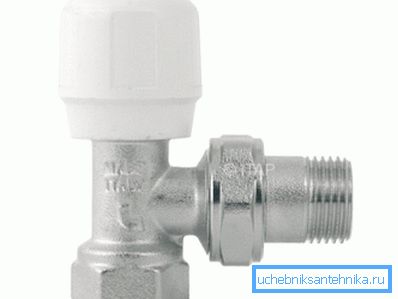
Radiator valves
What can it be
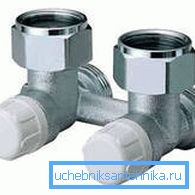
The company LUXOR from Italy produces various plumbing products, including corner taps for radiators with a bottom connection, one of which you see in the photo above.
This locking device is connected to the heating device using the G 3/4 or 1/2 Eurocone connection, in addition, it is possible to use the use of adapters to the M532 crane. The crane is designed for a maximum working pressure of 10 bar and a maximum operating temperature of 120? C.

This model was made by the company AGUA-WORID from China, although the fact of the geographical location of the manufacturer hardly affected the quality of the product, but its price is somewhat lower, as well as for other goods from China.
The material it is made of testifies to its positive sides - it is brass and it is able to keep the working pressure of 10 bar and the maximum temperature in working condition 120? C.
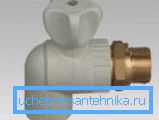
The Best company (China) makes cranes for heating radiators with polypropylene, that is, they have a direct outlet (spigot) for soldering PPR, without adding any adapters. The model shown in the top photo has an angular case with a diameter of 1 / 2H. The maximum working temperature is 96? C, the minimum 5? C, the allowable working pressure is 10 bar.
Model GIACOMINI R402X035 1 \\ is a valve with a thermostatic head type CLIP-CLAR with a gasket for a fitting at the valve of EROM rubber (diameter 1/2, 3/4). The instruction manual provides for the use of the device with a maximum working pressure of 10 bar (compression - 16 bar) and a maximum working temperature of 110? C.
The operation of a thermostat is fundamentally different from the operation of a ball valve, since only discrete mode is possible here, that is, if ball locking allows you to reduce or increase the flow, then here it is either there or not.
You simply set the desired temperature, for example, 50? C, and if it rises in the radiator, the passage is automatically blocked, and when it falls below, the passage opens again.
Note. All types of valves that are listed above and their modifications serve to adjust the temperature in radiators by increasing or decreasing the flow. Or such adjustment can be made only in a discrete mode, as is the case with a thermostat. These taps cannot be used to shut off water when the heater needs to be replaced.
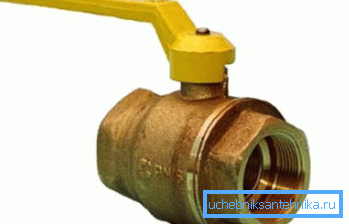
When the heating circuit is made of metal pipes, it is best to use brass valves of the ball type, although in some cases the valves with a crane are bumped in the old fashioned way - this is also normal, although not so convenient.
The installation of valves made of brass is carried out by means of couplings, or it can be an external thread, but for it they will still use a gland sleeve to connect to the pipeline. As a rule, an American woman is installed on brass ball valves for heating radiators (in the direction of the heater) so that not only adjustments but also battery replacements are possible.
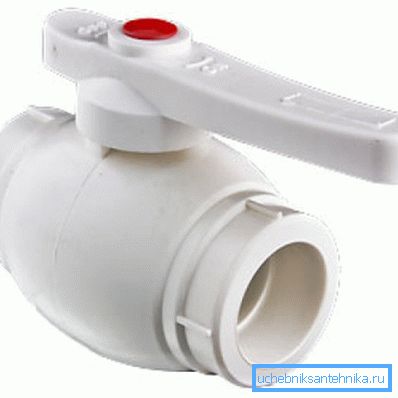
In cases where the heating circuit is made of polypropylene, homogeneous inlet valves (PPR) are installed to adjust the temperature and replace radiators.
Of course, such a device has significant advantages over its metal counterparts - it is susceptible to corrosion and, as a result, its operating life increases significantly. Such valves and fittings can operate at a working maximum pressure of 10 bar and a maximum operating temperature of 110 ° C, which can be found only in autonomous systems, and even then, this is considered as nonsense.
Note. Of course, you have to choose which taps to put on radiators for heating, but it should be remembered that the adjustments can only be used for adjustment, while the pass-throughs can still allow the heaters to be changed without discharging water from the system.
The nuances of editing
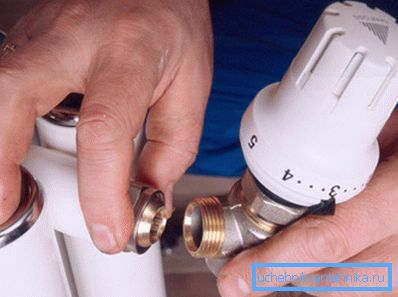
- In most cases, the installation of the adjustment valve on the radiator is made without towing (cabling) or with a fum-tape, with the addition of Unipack paste. This is possible thanks to rubber strips of the FROM type - they fit tightly onto the joint, flowing around the joint along the entire perimeter, and the blockage is absolute. But a similar effect is possible only if the edges of the docking joint do not have a defect such as potholes or corrosion - such defects will not allow the seal to close the connecting seam and water will leak out.
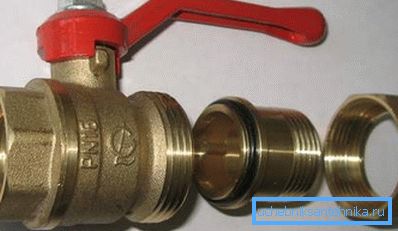
- But such a locking device, as in the top photo is best to install together with an American - so you can at any time turn off the water and remove the radiator. You can screw the American pipe directly into the battery or into the extension pipe (it can be either with external or internal threads). Here the most important thing is to correctly calculate the distance so that the twisted American flush with the output of the crane itself.
- The same function is performed by the American polypropylene - it allows you to remove radiators with closed taps and the installation requirements remain the same as for metal.. On the crane it is mounted in the soldering (welded) way.
Conclusion
You can always install any of the above cranes yourself, if, of course, you comply with all the rules and installation instructions offered by the manufacturer of the products.
But when choosing valves, you should always, first of all, focus on the technical needs of your heating system.